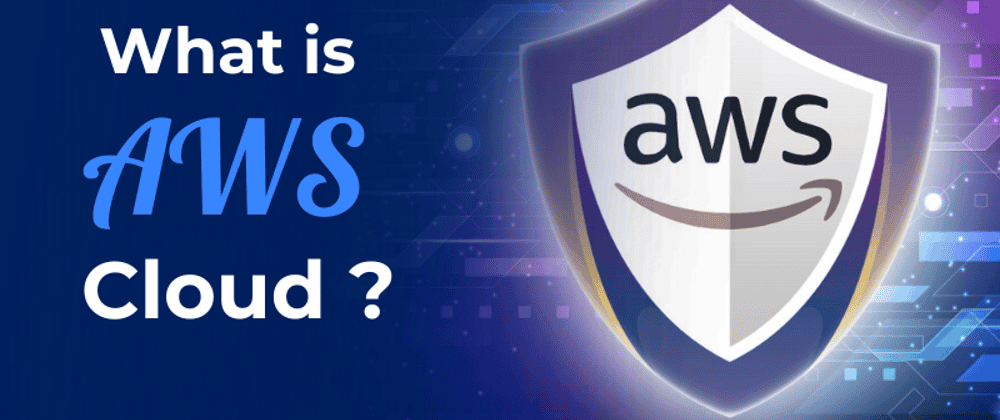NanoGPT: A Concise and Efficient Implementation of GPT Models
NanoGPT: A Concise and Efficient Implementation of GPT Models
This blog post delves into the nanoGPT repository, a streamlined implementation of GPT (Generative Pre-trained Transformer) models. Designed for simplicity and speed, nanoGPT enables researchers and practitioners to quickly reproduce GPT-2 results or adapt the code for custom tasks. We'll explore its key modules, code structure, and practical considerations, offering insights into its design philosophy and potential applications.
Summary
nanoGPT provides a compact and efficient codebase for training and fine-tuning medium-sized GPT models. Its emphasis on simplicity and speed makes it ideal for learning, experimentation, and rapid prototyping. This implementation avoids the complexity often associated with larger, more feature-rich libraries, focusing on core functionality for ease of understanding and modification.
Modules
model.py: Defines the GPT model architecture.train.py: Manages the training loop, data loading, optimization, and evaluation.sample.py: Provides functionality for text generation from trained models.configurator.py: Handles configuration management, allowing for command-line or file-based overrides.data/: Contains scripts for preparing datasets (e.g., OpenWebText, Shakespeare).
Code Structure
Model Definition (model.py)
The core of nanoGPT lies in model.py, which defines the GPT model architecture. This includes the GPTConfig dataclass and the GPT class.
GPTConfig: This dataclass encapsulates model hyperparameters such asblock_size,vocab_size,n_layer,n_head,n_embd,dropout, andbias. These parameters govern the model's size and complexity.GPT: The main GPT model class. It comprises an embedding layer (wtefor tokens,wpefor positional information), a stack of transformer blocks (Block), and a final linear layer (lm_head) for next-token prediction. The forward pass involves embedding input tokens and positions, passing them through the transformer blocks, and then generating logits for the next token.Block: A single transformer block, composed of LayerNorm, CausalSelfAttention, and MLP.LayerNorm: Layer normalization with optional bias.CausalSelfAttention: Implements causal self-attention, utilizing Flash Attention if available (PyTorch >= 2.0).MLP: A standard multi-layer perceptron.GPT.from_pretrained(...): Allows loading pre-trained weights from Hugging Face Transformers, enabling fine-tuning on new datasets.GPT.configure_optimizers(...): Configures the AdamW optimizer, separating parameters for weight decay.GPT.estimate_mfu(...): Estimates Model Flops Utilization (MFU) for performance analysis.GPT.generate(...): Generates text from the model given a starting sequence, using parameters like temperature and top_k sampling.
Training Loop (train.py)
train.py orchestrates the model training process. Key features include:
- Initialization: Sets up the model, optimizer, data loaders, and DDP (Distributed Data Parallel) for multi-GPU training.
- Data Loading: Loads data efficiently from
.binfiles usingnp.memmap. - Training Loop: Iterates through the data, performing forward and backward passes and updating model parameters, leveraging gradient accumulation.
- Evaluation: Monitors performance on a validation set to track progress.
- Learning Rate Scheduling: Uses cosine decay with linear warmup.
- Checkpointing: Saves model states periodically or upon improved validation loss.
- Logging: Tracks training progress via console and optional Weights & Biases integration.
- PyTorch Compilation: Uses
torch.compilefor performance optimization. - DDP: Supports multi-GPU training with
torch.nn.parallel.DistributedDataParallel.
Sampling (sample.py)
The sample.py script handles text generation. It loads a trained model and uses iterative prediction to generate text, decoding the generated token IDs back into text.
Configuration (configurator.py)
configurator.py provides a flexible configuration system. It allows overriding default settings using command-line arguments or configuration files.
Data Preparation (data/)
The data/ directory contains scripts for preparing datasets. For instance, the openwebtext/prepare.py script utilizes the Hugging Face datasets library to download and process the OpenWebText dataset.
External API Calls
- Hugging Face Datasets: Used to download OpenWebText.
- Hugging Face Transformers: Used to load pre-trained GPT-2 models.
- Requests: Used for downloading data in some datasets.
Insights
nanoGPT’s strengths lie in its simplicity, efficiency, flexibility, and reproducibility. Its compact codebase makes it a valuable resource for understanding and experimenting with GPT models. While focused on practicality, its clear structure also makes it well-suited for educational purposes.
Conclusion
nanoGPT provides a streamlined and accessible approach to working with GPT models. Its design prioritizes ease of use and modification without sacrificing performance. Whether you're a seasoned researcher or a newcomer to large language models, this repository offers a valuable tool for learning, experimenting, and building upon the fundamentals of GPT architecture.
Related Articles
Software Development
Unveiling the Haiku License: A Fair Code Revolution
Dive into the innovative Haiku License, a game-changer in open-source licensing that balances open access with fair compensation for developers. Learn about its features, challenges, and potential to reshape the software development landscape. Explore now!
Read MoreSoftware Development
Leetcode - 1. Two Sum
Master LeetCode's Two Sum problem! Learn two efficient JavaScript solutions: the optimal hash map approach and a practical two-pointer technique. Improve your coding skills today!
Read MoreBusiness, Software Development
The Future of Digital Credentials in 2025: Trends, Challenges, and Opportunities
Digital credentials are transforming industries in 2025! Learn about blockchain's role, industry adoption trends, privacy enhancements, and the challenges and opportunities shaping this exciting field. Discover how AI and emerging technologies are revolutionizing identity verification and workforce management. Explore the future of digital credentials today!
Read MoreSoftware Development
Unlocking the Secrets of AWS Pricing: A Comprehensive Guide
Master AWS pricing with this comprehensive guide! Learn about various pricing models, key cost factors, and practical tips for optimizing your cloud spending. Unlock significant savings and efficiently manage your AWS infrastructure.
Read MoreSoftware Development
Exploring the GNU Verbatim Copying License
Dive into the GNU Verbatim Copying License (GVCL): Understand its strengths, weaknesses, and impact on open-source collaboration. Explore its unique approach to code integrity and its relevance in today's software development landscape. Learn more!
Read MoreSoftware Development
Unveiling the FSF Unlimited License: A Fairer Future for Open Source?
Explore the FSF Unlimited License: a groundbreaking open-source license designed to balance free software distribution with fair developer compensation. Learn about its origins, strengths, limitations, and real-world impact. Discover how it addresses the challenges of open-source sustainability and innovation.
Read MoreSoftware Development
Conquer JavaScript in 2025: A Comprehensive Learning Roadmap
Master JavaScript in 2025! This comprehensive roadmap guides you through fundamental concepts, modern frameworks like React, and essential tools. Level up your skills and build amazing web applications – start learning today!
Read MoreBusiness, Software Development
Building a Successful Online Gambling Website: A Comprehensive Guide
Learn how to build a successful online gambling website. This comprehensive guide covers key considerations, technical steps, essential tools, and best practices for creating a secure and engaging platform. Start building your online gambling empire today!
Read MoreAI, Software Development
Generate Images with Google's Gemini API: A Node.js Application
Learn how to build an AI-powered image generator using Google's Gemini API and Node.js. This comprehensive guide covers setup, API integration, and best practices for creating a robust image generation service. Start building today!
Read MoreSoftware Development
Discover Ocak.co: Your Premier Online Forum
Explore Ocak.co, a vibrant online forum connecting people through shared interests. Engage in discussions, share ideas, and find answers. Join the conversation today!
Read MoreSoftware Development
Mastering URL Functions in Presto/Athena
Unlock the power of Presto/Athena's URL functions! Learn how to extract hostnames, parameters, paths, and more from URLs for efficient data analysis. Master these essential functions for web data processing today!
Read MoreSoftware Development
Introducing URL Opener: Open Multiple URLs Simultaneously
Tired of opening multiple URLs one by one? URL Opener lets you open dozens of links simultaneously with one click. Boost your productivity for SEO, web development, research, and more! Try it now!
Read More
Software Development, Business
Unlocking the Power of AWS: A Deep Dive into Amazon Web Services
Dive deep into Amazon Web Services (AWS)! This comprehensive guide explores key features, benefits, and use cases, empowering businesses of all sizes to leverage cloud computing effectively. Learn about scalability, cost-effectiveness, and global infrastructure. Start your AWS journey today!
Read MoreSoftware Development
Understanding DNS in Kubernetes with CoreDNS
Master CoreDNS in Kubernetes: This guide unravels the complexities of CoreDNS, Kubernetes's default DNS server, covering configuration, troubleshooting, and optimization for seamless cluster performance. Learn best practices and avoid common pitfalls!
Read MoreSoftware Development
EUPL 1.1: A Comprehensive Guide to Fair Open Source Licensing
Dive into the EUPL 1.1 open-source license: understand its strengths, challenges, and real-world applications for fair code. Learn how it balances freedom and developer protection. Explore now!
Read MoreSoftware Development
Erlang Public License 1.1: Open Source Protection Deep Dive
Dive deep into the Erlang Public License 1.1 (EPL 1.1), a crucial open-source license balancing collaboration and contributor protection. Learn about its strengths, challenges, and implications for developers and legal teams.
Read MoreSoftware Development
Unlocking Kerala's IT Job Market: Your Path to Data Science Success
Launch your data science career in Kerala's booming IT sector! Learn the in-demand skills to land high-paying jobs. Discover top data science courses & career paths. Enroll today!
Read More
Software Development
Automation in Software Testing: A Productivity Booster
Supercharge your software testing with automation! Learn how to boost productivity, efficiency, and accuracy using automation tools and best practices. Discover real-world examples and get started today!
Read MoreSoftware Development
Mastering Anagram Grouping in JavaScript
Master efficient anagram grouping in JavaScript! Learn two proven methods: sorting and character counting. Optimize your code for speed and explore key JavaScript concepts like charCodeAt(). Improve your algorithms today!
Read More
Software Development
Mastering Kubernetes Deployments: Rolling Updates and Scaling
Master Kubernetes Deployments for seamless updates & scaling. Learn rolling updates, autoscaling, and best practices for high availability and efficient resource use. Improve your application management today!
Read More